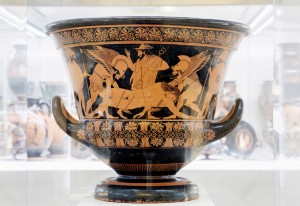November 11, 2014
Reborn Getty Villa for post Marion True era – now looting-wary
The Getty has come under heavy attack from Italy in the last 10 years over numerous allegations of looting.
Now, a change of management later, they are describing themselves as being “looting-wary”. This is a great step forward, although I’m not sure they would have ever publicly stated before that they were looting-heedless. Publicly, they always maintained their stance that due diligence had been followed, but this all fell apart with the raid on the warehouse of art dealer Giacomo Medici.
From:
Art Newspaper
Getty plans to redisplay the Getty Villa
Acquisitions and long-term loans will expand focus beyond Ancient Greece and Rome
By Jori Finkel. Web only
Published online: 03 November 2014Timothy Potts, the first director of the J. Paul Getty Museum with a PhD in ancient art and archaeology, has had ambitious ideas for revamping the Getty Villa since taking on the job two years ago. Now, after the appointment of Jeffrey Spier as the senior curator of antiquities, he reveals how the Getty’s plans for the villa are starting to take shape. He also tells The Art Newspaper that the Getty is planning to expand its antiquities collection to embrace ancient Mediterranean cultures beyond the museum’s traditional Greek and Roman focus. To achieve this the Los Angeles museum is working to organise long-term loans from other major museums, Potts says, and to make new acquisitions.
In their first interview together, Potts and Spier discussed their vision for fully reinstalling the galleries of the faux-Roman villa on the edge of Malibu that is home to the museum’s Roman and Greek antiquities. The current arrangement is a legacy of the Getty’s former antiquities curator, Marion True. Unveiled in 2006, True’s thematic displays, for example “Gods and Goddesses” and “Athletes and Competition”, mix objects of different periods.
Read the rest of this entry »

